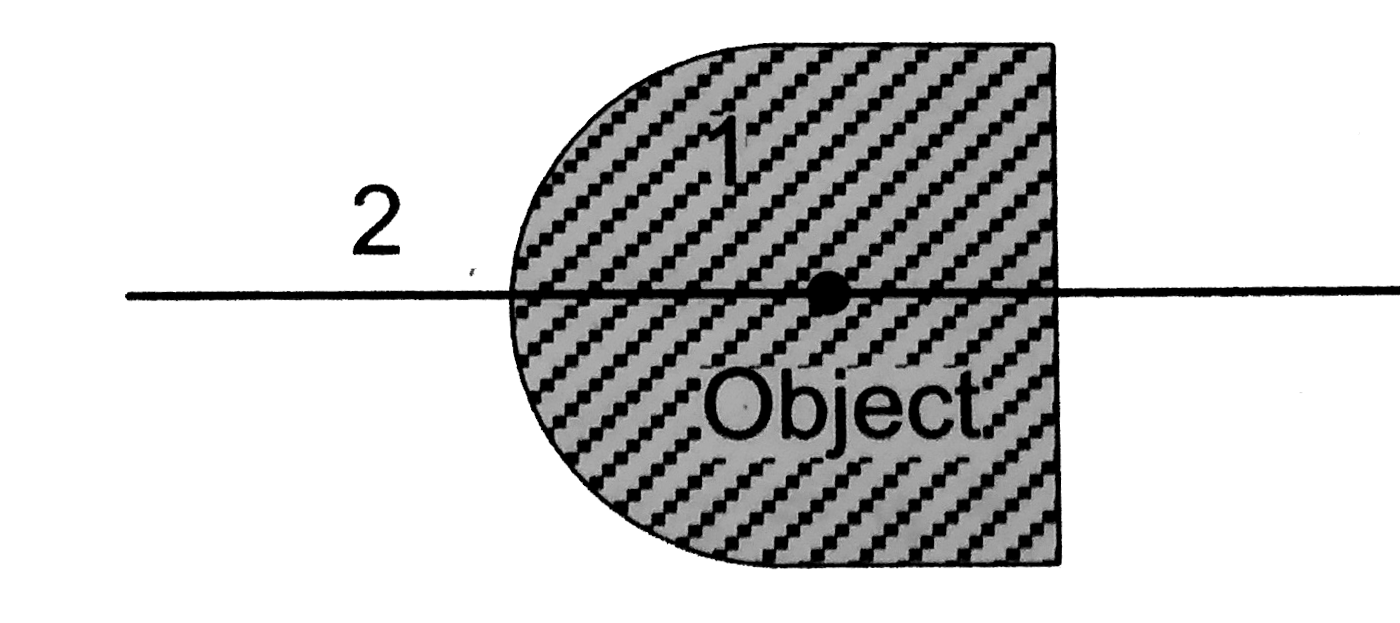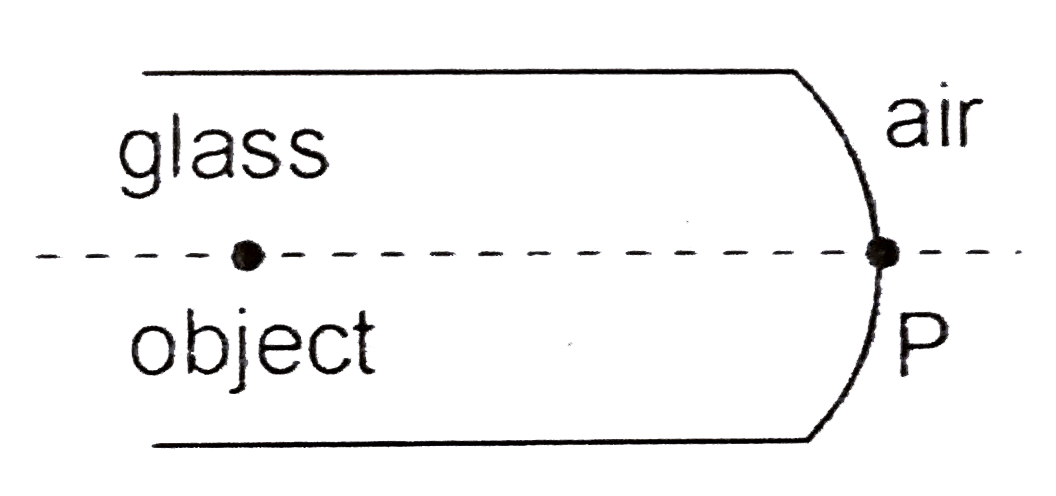Refraction takes place at a concave spherical boundary separating glass air medium. For the image to be real, the object distance (μg=3/2)
should be greater than three times the radius of curvature of refracting surface
should be greater than two times the radius of curvature of the refracting surface
should be greater than the radius of curvature of refracting surface
is independent of the radius of curvature of the refracting surface
The correct Answer is:A
Applying μ2v−μ1u=μ2−μ1R
1v−1.5(−u)=1−(1.5)−R or 1v+32u=12R
for v to be positive 12R>32u
oru>3R

Topper's Solved these Questions
- BOOK - A2ZCHAPTER - GEOMETRICAL OPTICSEXERCISE - Prism Theory And Dispersion Of Light45videos
GEOMETRICAL OPTICS
- BOOK - A2ZCHAPTER - GEOMETRICAL OPTICSEXERCISE - Optical Instruments55videos
GEOMETRICAL OPTICS
- BOOK - A2ZCHAPTER - GEOMETRICAL OPTICSEXERCISE - Section D - Chapter End Test30videos
GEOMETRICAL OPTICS
- BOOK - A2ZCHAPTER - ELECTROMAGNETIC WAVES AND COMMUNICATION SYSTEM EXERCISE - Section D - Chapter End Test30videos
ELECTROMAGNETIC WAVES AND COMMUNICATION SYSTEM
- BOOK - A2ZCHAPTER - MAGNETISM AND MATTEREXERCISE - Section D - Chapter End Test30videos
MAGNETISM AND MATTER
Similar Questions
Show that for refraction at a concave spherical surface (separating glass-air medium), the distance of the object should be greater than three times the radius of curvature of the refracting surface for the image to be real.
View SolutionA point object is above the principal axis in the concave side of a spherical interface separating medium 1 from medium 2. I f the object is in medium 1 and μ1>μ2, determine the position of the image by ray tracing.
View Solution
Knowledge Check
- Question 1 - Select One
Refraction takes place at a convex spherical boundary separating glass-air medium. For the image to be real, the object distance (μg=3/2) should be /is
Agreater than three times the radius of curvature of the refracting surfaceBgreater than two times the radius of curvature of the refracting surfaceCgreater than the radius of curvature of the refracting surfaceDindependent of the radius of curvature of the refracting surface - Question 2 - Select One
Refraction takes place at a convex spherical boundary separating air-glass medium. For the image to be real, the object distance (μg=3/2)
Note Object lying in the glass.Ashould be greater than three times the radius of curvature of the refracting surfaceBshould be greater than two times the radius of curvature of the refracting surfaceCshould be greater than the radius of curvature of the refracting surface.Dis independent of the radius of curvature of the refracting surface - Question 3 - Select One
A real object is kept in air and refraction occurs at the convex boundry of a spherical glass surface. For the image to be real, the real object distance (ng=3/2)
AShould be greater than three times the radius of curvature of the refracting surface.BShould be lesser than two times the radius of curvature of the refracting surfaceCShould be greater than the radius of curvature of the refracting surfaceDIs independent of the radius of curvature of the refracting surface
(a) A point object is placed on the principal axis of a convex spherical surface of radius of curvature R, which separates the two media of refractive indices nx and n2(n2>n1)
Draw the ray diagram and deduce the relation between the object distance (w), image distance (v) and the radius of curvature (R) for refraction to take place at the convex spherical surface from rarer to denser medium.
(b) A converging lens has a focal length of 20 cm in air. It is made of a material of refractive index 1.6. If it is immersed in a liquid of refractive index 1.3, find its new focal length.View SolutionA convex spherical refracting surfaces separates two media glass and air (μg=1.5). If the image is to be real, at what minimum distance u should the object be placed in air if R is the radius of curvature
View SolutionRadius of curvature of a concave spherical surface separating air-glass medium is R. A point object is placed on the principal axis in the glass (mg=1.5). For the image to be real seen by

observer in air, distance of the object from P should beView SolutionIn Figure, a point object O is placed in air. A spherical boundary separates two media. Ab is the principall axis. The refractive index above AB is 1.6 and below AB is 2.0. The separation between the images formed due to refraction at a the spherical surface is (assume the radius of curvature (R) to be 1 unit)
 View Solution
View SolutionAn object is placed at a distance of 10 cm (in a medium of μ = 1) from the pole of a spherical refracting surface bounding a medium of μ = 1.5. If the image formed is virtual and at a distance of 40 cm, then the spherical surface is –
View Solution

